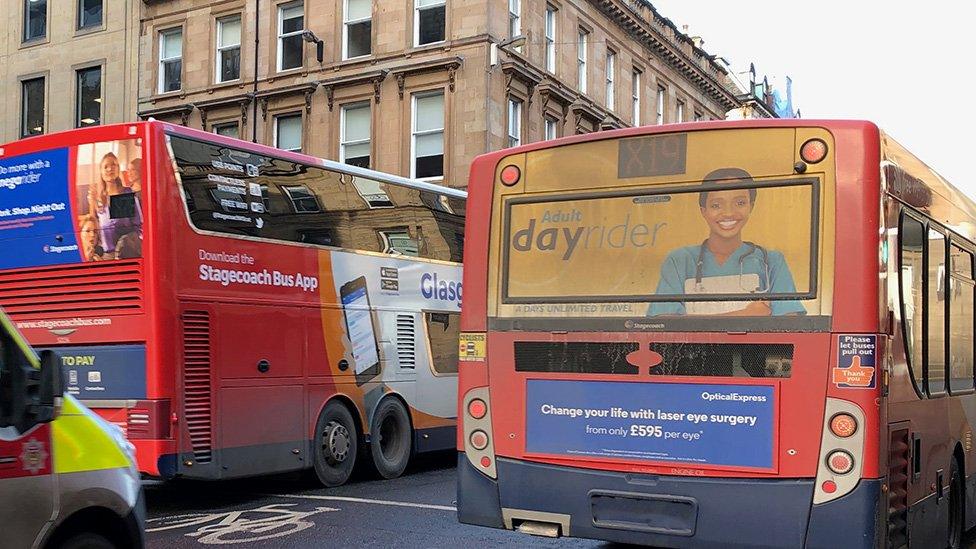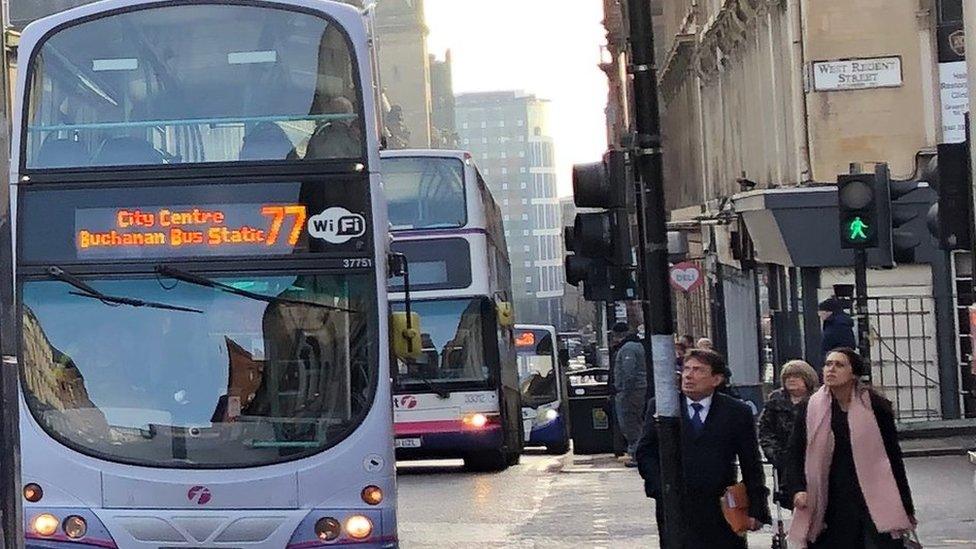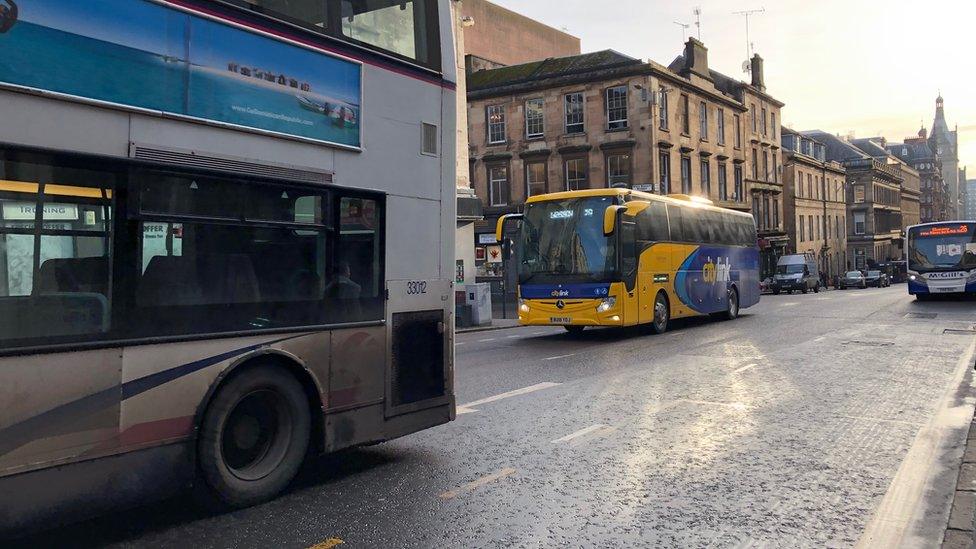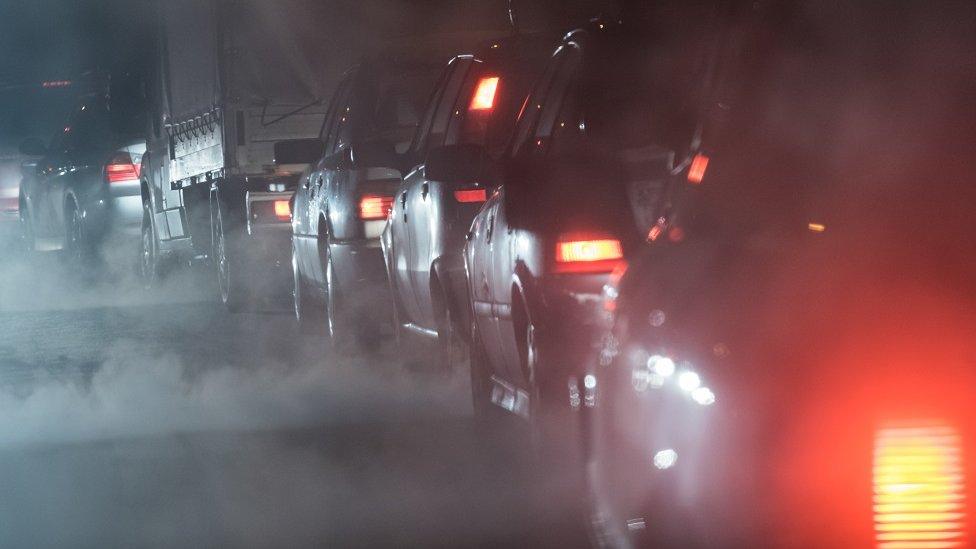Air quality worsens on Scotland's most-polluted street
- Published

Hope Street is once again the most-polluted street in Scotland
Air quality on Scotland's most-polluted street has got worse in the past year, according to figures from Friends of the Earth (FoE) Scotland.
Nitrogen dioxide levels on Hope Street in Glasgow averaged 60 micrograms per cubic metre (mcg/m3) last year compared with 58 in 2017.
The new total means pollution there is 50% higher than the legal limit.
It is hoped a new Low Emissions Zone (LEZ), introduced on 31 December, will help bring levels down.
The two measures of air pollution are nitrogen dioxide and particulate matter (PM10), which are both caused by fossil-fuel engines.
Queensferry Road in Edinburgh is second on the list for nitrogen oxide and has become the most-polluted street for PM10.
Salamander Street in the capital has fallen to second for PM10 with average readings of 21 mcg/m3 compared with 23 the previous year.
The Scottish government said Scotland had better air quality and stricter targets than most countries but there were still a few hotspots of pollution.

Most-polluted streets for Nitrogen Dioxide in 2018

Glasgow Kerbside (Hope St) - 60
Edinburgh Queensferry Road - 51
Edinburgh Nicolson Street - 49
Edinburgh St John's Road - 46
Dundee Seagate - 43
Dundee Lochee Road - 42
Figures in mcg per cubic metre. The European Ambient Air Quality Directive set a limit for NO2 of 40 mcg per cubic metre.

Most-polluted streets for particulate matter in 2018

Edinburgh Queensferry Road - 24
Edinburgh Salamander St - 21
Aberdeen Market Street 2 - 17
Aberdeen Wellington Road - 17
(Both streets in Aberdeen are within legal limits)
Figures in mcg per cubic metre. The Scottish air quality objective is 18 mcg per cubic metre.

Illegal levels
Gavin Thomson, FoE Scotland's air pollution campaigner, said: "These shocking figures show that the air pollution health crisis isn't going away. In many areas it's getting worse.
"With streets in Scotland's cities still at illegal levels of air pollution, the Scottish government's 'Cleaner Air for Scotland' strategy has clearly failed to deliver.
"The current review of this strategy needs to result in a transformation in transport if we are to make Scotland's air safe for people."
The low emission zone (LEZ) in Glasgow bans a proportion of the most-polluting buses from the city centre but campaigners have dubbed it a "low ambition zone".
They say the plan to phase out the dirtiest buses in the city centre over a five-year period will bring almost no change in the first year.
They have also criticised the decision not to impose restrictions on all other vehicles until 2022.
The zone led environmentalists to quit an advisory panel which had been helping ministers with its strategy.
Ministers have pledged to introduce similar zones in Edinburgh, Dundee and Aberdeen by 2020.
Environment Secretary Roseanna Cunningham said: "Compared to the rest of the UK and other parts of Europe, Scotland enjoys a high level of air quality and we have set more stringent air quality targets.
"Low Emission Zones will help further improve the quality of the air in our towns and cities by allowing access to only the cleanest vehicles."
She added: "We recognise that a few hotspots of poorer air quality remain in some Scottish cities and towns, and are working with local authorities and other partners to address this as soon as possible."
- Published21 January 2018
